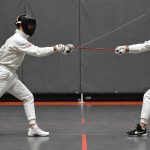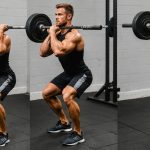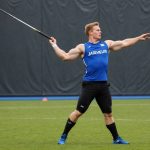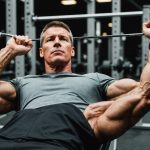Unlocking Peak Performance: Integrating Strength and Conditioning into UK Basketball Players’ Training Regimens
In the highly competitive world of basketball, achieving peak performance is not just about mastering the skills of the game; it also requires a robust physical foundation. For UK basketball players, integrating strength and conditioning into their training regimens is crucial for enhancing athletic performance, preventing injuries, and gaining a competitive edge. Here, we delve into the importance, strategies, and best practices for incorporating strength and conditioning into basketball training.
The Importance of Strength and Conditioning in Basketball
Strength and conditioning are fundamental components of any athletic training program, and basketball is no exception. These aspects of training are designed to improve an athlete’s overall physical fitness, which in turn enhances their performance on the court.
In parallel : Essential Cross-Training Strategies for UK Basketball Players: Top Injury Prevention Techniques
Enhancing Athletic Performance
Strength training helps basketball players develop the power, speed, and endurance necessary for high-intensity games. For instance, explosive power, which can be developed through plyometric exercises like box jumps and depth jumps, is essential for jumping high to block shots or grab rebounds[4].
“Strength training is not just about lifting weights; it’s about building the capacity to perform at a high level over a prolonged period,” says a strength and conditioning coach from Basketball England. “It translates directly into better performance on the court.”
Topic to read : Unlocking Precision: Effective Techniques for UK Basketball Players to Enhance Hand-Eye Coordination in Shooting
Injury Prevention
Injury prevention is another critical benefit of strength and conditioning. By strengthening the muscles and improving flexibility, athletes can reduce their risk of injuries such as muscle strains, tendonitis, and ligament sprains. For example, core training exercises like planks and Russian twists help stabilize the body, reducing the risk of lower back injuries[5].
Key Components of a Strength and Conditioning Program
A well-structured strength and conditioning program for basketball players should include several key components.
Strength Training
Strength training is aimed at building muscular strength and power. Here are some essential exercises:
- Squats: Works the quadriceps, hamstrings, glutes, and core muscles.
- Deadlifts: Targets the entire lower body, back, and core.
- Bench Press: Develops the chest, shoulders, and triceps.
- Pull-ups: Strengthens the back, shoulders, and arms.
| Exercise | Muscle Group | Benefits |
|
|-----------------|
|
| Squats | Quadriceps, Hamstrings, Glutes, Core | Improves lower body strength and power |
| Deadlifts | Lower Body, Back, Core | Enhances overall strength and stability |
| Bench Press | Chest, Shoulders, Triceps | Develops upper body strength |
| Pull-ups | Back, Shoulders, Arms | Strengthens upper body and improves grip |
Conditioning
Conditioning focuses on improving cardiovascular endurance, agility, and speed. Here are some effective conditioning exercises:
- High-Intensity Interval Training (HIIT): Involves short bursts of high-intensity exercise followed by brief periods of rest.
- Agility Drills: Includes cone drills, ladder drills, and shuttle runs to improve quickness and change of direction.
- Plyometric Exercises: Such as box jumps and depth jumps to enhance explosive power.
| Exercise | Benefits | Example |
|
|-----------------------------------|
|
| HIIT | Improves cardiovascular endurance | Sprints, burpees |
| Agility Drills | Enhances quickness and agility | Cone drills, ladder drills |
| Plyometric Exercises | Increases explosive power | Box jumps, depth jumps |
Pre-Season and In-Season Training Programs
The approach to strength and conditioning varies between the pre-season and in-season phases.
Pre-Season Training
During the pre-season, the focus is on building a strong foundation of strength, power, and endurance. Here are some strategies:
- Periodized Training: Divide the training into specific phases, each with a different focus (e.g., strength, power, endurance).
- High-Volume Training: Increase the intensity and volume of training to build a robust physical base.
- Injury Prevention Programs: Implement specific exercises to prevent common basketball injuries, such as ACL tears and ankle sprains.
| Phase | Focus | Example |
|
|--------------------------------|
|
| Strength Phase | Building muscular strength | Squats, deadlifts |
| Power Phase | Developing explosive power | Plyometric exercises |
| Endurance Phase| Improving cardiovascular endurance| HIIT, long runs |
In-Season Training
During the in-season phase, the focus shifts to maintaining and fine-tuning the physical attributes developed in the pre-season. Here are some strategies:
- Maintenance Training: Reduce the volume and intensity of training to avoid overtraining.
- Active Recovery: Incorporate light exercises and stretching to aid in recovery between games.
- Sport-Specific Training: Focus on exercises that mimic the movements and demands of basketball.
| Strategy | Benefits | Example |
|
|-----------------------------------|
|
| Maintenance Training| Maintains physical fitness | Light weightlifting, short runs |
| Active Recovery | Aids in recovery | Stretching, foam rolling |
| Sport-Specific Training| Enhances game-specific skills| Agility drills, plyometric exercises|
Case Studies: Successful Implementation in UK Teams
Several UK basketball teams have seen significant improvements by integrating comprehensive strength and conditioning programs into their training regimens.
The London Lions
The London Lions, a prominent UK basketball team, implemented a specialized strength and conditioning program that included a mix of strength training, plyometrics, and agility drills. This program resulted in improved athletic performance and a reduction in injuries.
“The introduction of a structured strength and conditioning program has been a game-changer for us,” said the team’s head coach. “Our players are stronger, faster, and more resilient than ever before.”
The Leicester Riders
The Leicester Riders also adopted a holistic approach to strength and conditioning, combining strength training with agility and conditioning exercises. This approach led to enhanced lateral movement and overall performance on the court.
“Our players’ ability to change direction quickly and maintain balance has improved significantly,” noted the team’s strength and conditioning coach. “This has been a key factor in our success this season.”
Best Practices for Coaches and Trainers
Coaches and trainers play a pivotal role in designing and implementing effective strength and conditioning programs. Here are some best practices:
Individualized Training Plans
Each player has unique needs and abilities. Tailoring training plans to individual players ensures they are challenged appropriately while minimizing the risk of injury.
“Understanding each player’s strengths and weaknesses is crucial,” advises a coach from Basketball England. “It allows us to create personalized drills that target specific areas for improvement.”
Emphasis on Technique
Proper form and technique are essential in every drill. This not only enhances performance but also reduces the risk of injury.
“Technique is everything in strength and conditioning,” emphasizes a strength and conditioning coach. “It’s about doing the right exercises in the right way to get the best results.”
Use of Technology and Data
Utilizing technology and data analytics can provide valuable insights into player performance and help coaches refine their training programs.
“Google Scholar and other sports science resources offer a wealth of information on the latest training methods and research,” notes a sports scientist. “By leveraging this data, coaches can make informed decisions that optimize player performance.”
Integrating strength and conditioning into UK basketball players’ training regimens is a multifaceted approach that requires careful planning, execution, and adaptation. By focusing on key components such as strength training, conditioning, and sport-specific exercises, coaches can unlock peak performance in their athletes. Through case studies and best practices, it is clear that a well-structured strength and conditioning program is essential for achieving success in basketball.
As the sports landscape continues to evolve, the importance of strength and conditioning will only grow. For UK basketball players aiming to reach the top of their game, delving into these strategies and practices is not just beneficial—it is imperative. By doing so, they can ensure they are physically prepared to perform at their best, every time they step onto the court.











